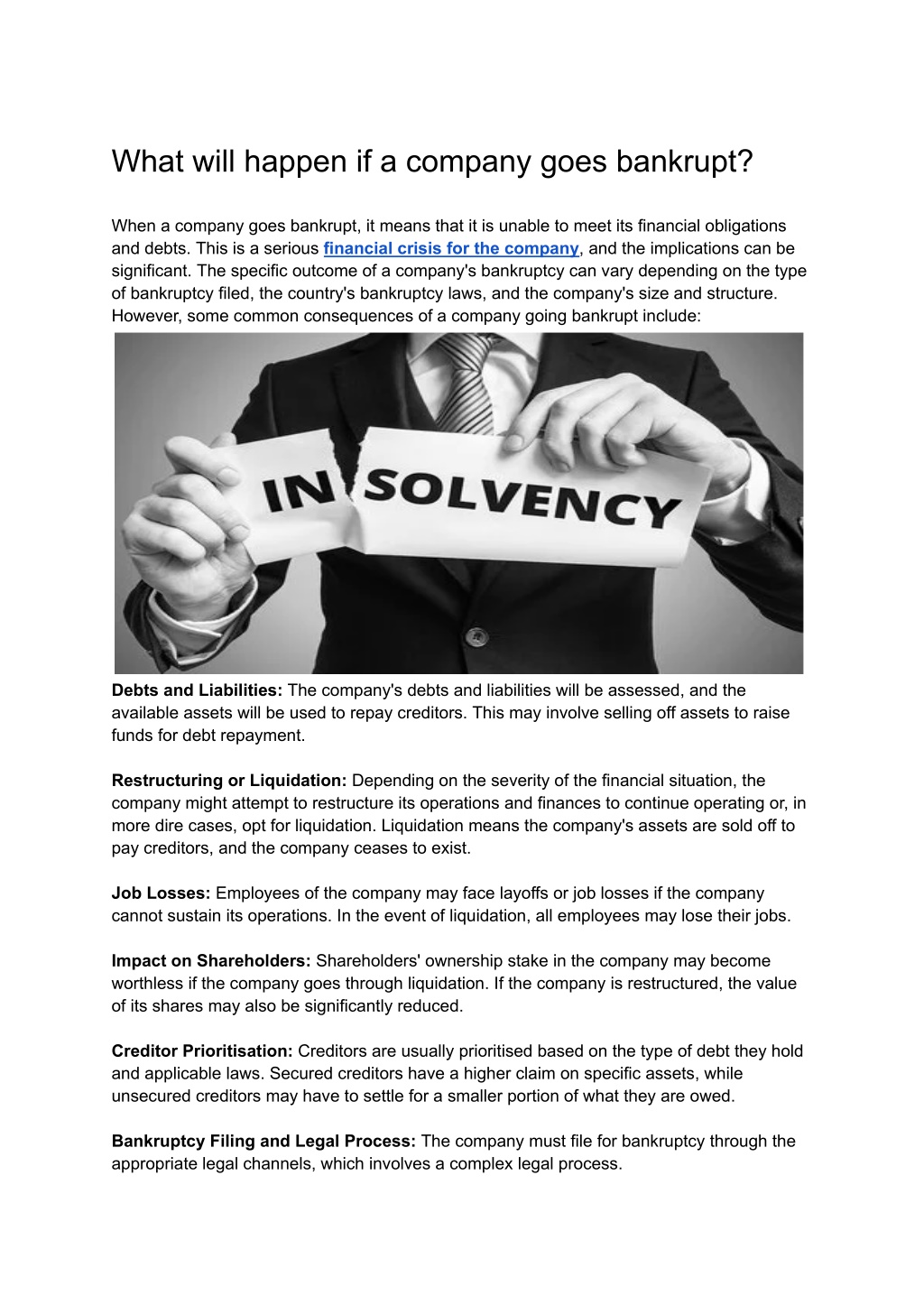What Happens to Administration Staff: Do Employees Still Get Paid When Company Goes Into Liquidation?
Recognizing the Consequences of Firm Liquidation on Employee Retention and Benefits

Impact on Job Security
In case of firm liquidation, the effect on job protection can be significant for staff members as unpredictability relating to future work develops. When a company goes into liquidation, employees encounter the overwhelming prospect of prospective job loss. This uncertainty can cause heightened stress and anxiety and stress and anxiety among the workforce, influencing their morale and performance.
During the liquidation procedure, workers may experience an array of feelings, including stress, rage, and fear, as they face the possibility of unemployment. The lack of clearness bordering the timeline of the liquidation and the destiny of their settings can produce a feeling of instability within the workforce.
In addition, workers might likewise be worried about the condition of their benefits, such as health care protection, retirement strategies, and paid pause, throughout and after the liquidation procedure. The potential loss of these benefits adds another layer of complexity to a currently difficult scenario for staff members.
Adjustments in Employee Conveniences

One usual change is the reduction or elimination of certain benefits to reduce expenses and work out arrearages. Company payments to retirement plans might discontinue, leaving workers to take on the complete responsibility of saving for their future. Healthcare advantages might be scaled back, resulting in greater out-of-pocket expenses for medical services.
Interaction becomes critical throughout this period of transition. Employers need to be clear about the changes, supplying clear descriptions and assistance to assist employees navigate via the alterations. Open dialogue and assistance can assist ease stress and anxiety and unpredictability among the workforce, fostering an extra positive shift experience despite the difficult scenarios.
Retention Techniques Post-Liquidation
Following the business liquidation, implementing efficient retention approaches is vital to guarding organizational ability and keeping security within the workforce. In times of unpredictability, employees may feel nervous concerning their future work safety and security browse around these guys and be much more inclined to seek alternate job opportunity. To alleviate this risk, companies must concentrate on open interaction, giving transparency concerning the firm's situation, and offering assistance to staff members throughout the shift duration.
One trick retention method post-liquidation is to focus on worker well-being and morale. This can be accomplished with regular check-ins, counseling solutions, and developing a favorable work setting. In addition, supplying career development possibilities and upskilling programs can improve staff member inspiration and engagement throughout difficult times. Acknowledging and awarding employees for their commitment and dedication can also foster a sense of commitment and devotion to the company.
In addition, developing a clear job progression course and establishing sensible goals can give workers a feeling of instructions and function within the firm (administration staff). By buying employee advancement and actively including them in decision-making procedures, organizations can boost staff member retention prices and build a resistant workforce post-liquidation
Legal Legal Right and Protections
During the after-effects of business liquidation, it is critical to resolve the lawful civil liberties and securities available to workers to make sure a fair and certified process. It is vital for employees to comprehend these legal rights and look for legal advice if needed to navigate the intricacies of the liquidation process.
In addition, in cases where a company enters into liquidation, employees are commonly thought about advantageous lenders, giving them greater concern in receiving superior repayments over various other lenders. This protection assists focus on resolving employee insurance claims prior to other economic responsibilities are met. In addition, legal safeguards exist to avoid unjust dismissals during liquidation, guaranteeing that terminations are performed according to developed labor regulations. Recognizing these lawful rights and securities is essential for staff members to protect their rate of Get More Information interests and seek suitable option in case of business liquidation.
Handling Financial Uncertainty
Navigating financial uncertainty can be a complicated difficulty for staff members impacted by company liquidation. The sudden loss of revenue, advantages, and work protection can dramatically disrupt individuals' monetary stability. During such times, it is crucial for employees to analyze their existing financial situation genuinely. Developing a detailed spending plan that focuses on vital costs can help in taking care of instant financial needs. Additionally, checking out available government support programs, such as unemployment insurance or re-training chances, can give some alleviation.
Looking for financial therapy or guidance from experts can offer important understandings right into handling debts, reorganizing financial commitments, and preparing for the future. It is important for staff members to stay informed regarding their privileges, such as severance bundles or superior payments, to guarantee they receive what they are owed. Additionally, considering alternate work options or gig possibilities can help bridge monetary voids throughout this transitional period. By proactively attending to monetary obstacles, employees can navigate through the uncertainty brought on by firm liquidation with higher strength and preparedness.
Final Thought
In verdict, business liquidation can have substantial ramifications on employee job safety, benefits, and overall health. Comprehending legal civil liberties and defenses can aid minimize the influence of liquidation on workers.
When a firm deals with liquidation, the destiny of its workers hangs try these out in the balance, increasing vital questions concerning work safety, benefits, and lasting stability. The effect of firm liquidation on employee retention and benefits is a multifaceted concern that requires a closer examination to comprehend the full range of its effects.
Navigating economic uncertainty can be a daunting obstacle for employees affected by firm liquidation. By proactively attending to financial obstacles, employees can navigate via the unpredictability caused by business liquidation with better resilience and preparedness.
